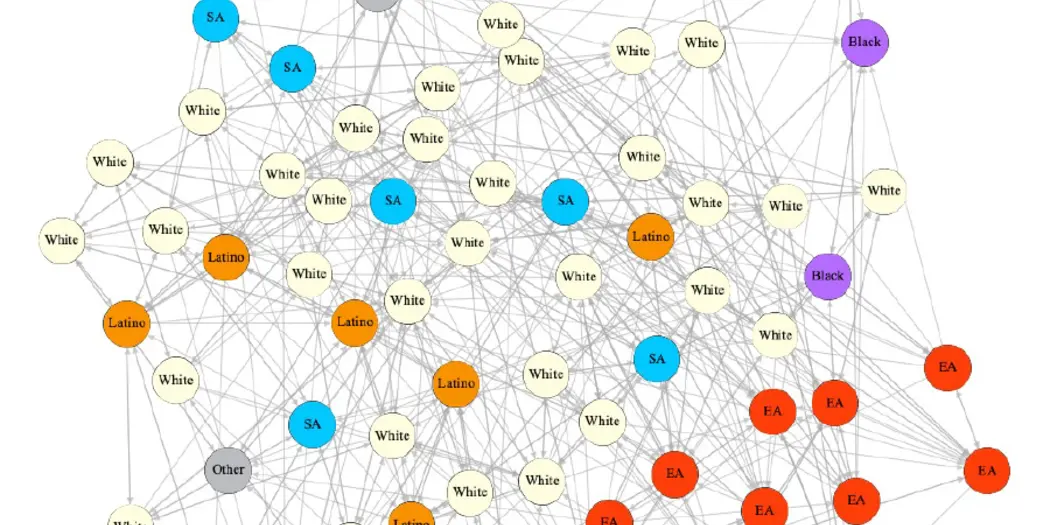Credit: pixaby
New MIT Sloan research: How multiethnic networking helps break through the “bamboo ceiling”
Researcher sheds more light on why East Asians are less likely than South Asians to attain leadership positions in the US
Cambridge, Mass., December 22, 2021—When Parag Agrawal was recently named CEO of Twitter, he joined a roster of prominent South Asian CEOs who have secured leadership roles in such prominent US companies as Alphabet (Sundar Pichai), IBM (Arvind Krishna), Microsoft (Satya Nadella), Adobe (Shantanu Narayen), Citigroup (Vikram Pandit), Mastercard (Ajay Banga), and PepsiCo (Indra Nooyi), among others. By contrast, there are few prominent East Asian CEOs in the US—despite their high educational achievements and economic prosperity.
at the MIT Sloan School of Management has spent the last five years studying this puzzling phenomenon commonly referred to as the “Bamboo Ceiling.” In his widely acclaimed research paper published last year in the Proceedings of the National Academy of Sciences, Lu and colleagues found that ethnic East Asians (e.g., Chinese, Japanese) are less likely than ethnic South Asians (e.g., Indians, Pakistanis) and whites to attain leadership roles in American organizations, in part because the non-assertive communication style of East Asians does not match the leadership prototype espoused by American mainstream culture.
Now, in a new research paper published in the Journal of Personality and Social Psychology, Lu has revealed an additional mechanism contributing to East Asians’ lower leadership emergence: their higher propensity to network with their ethnic ingroup members (i.e., other East Asians), also known as ethnic homophily. Lu’s new research demonstrates that East Asians—but not South Asians—are less likely than other ethnicities to emerge as leaders in multiethnic environments partly because East Asians tend to socialize more with their ethnic ingroup members.
“When a person frequently socializes with ethnic groups other than their own, this person is more likely to be perceived as an inclusive leader who can bridge the values and interests of different ethnic groups, a characteristic central to leadership in multiethnic environments,” says Lu.
To research the “Bamboo Ceiling” phenomenon from a social network perspective, Lu conducted three studies in multiethnic US law schools and business schools — the fountainheads of prospective leaders. First, he analyzed a large survey of 54,620 students from 124 US law schools and found that East Asians had higher ethnic homophily than all other ethnicities (whites, South Asians, Blacks, Latinos, Middle Easterners, and Native Americans). Using social network analysis, the next two studies examined friendship networks and leadership emergence in 11 class sections of new MBA students in a US business school; Prof. Lu found that East Asians were the least likely to be nominated and elected as leaders. East Asians’ lower leadership emergence was partly explained by their higher tendency to socialize with ethnic in-group members (i.e., other East Asians). These results held even after accounting for factors such as individuals’ assertiveness, general popularity, English proficiency, American/international status, and personality.
Importantly, these findings were true for both East Asian Americans and East Asian internationals, suggesting that although East Asian Americans are native English speakers raised in the United States, their cultural upbringings may still predispose them to socialize more with their ethnic ingroup.
Note. “EA” = East Asian, “SA” = South Asian, “ME” = Middle Easterner. This friendship network of an MBA class section demonstrates East Asians’ high ethnic homophily. Compared to other ethnicities, East Asians were more likely to socialize with their ethnic in-groups (i.e., other East Asians).
Lu’s research highlights a potential challenge posed to East Asians by the cultural mismatch between their ethnic homophily and the social relational dynamics required for becoming leaders in the multiethnic American milieu.
Lu notes, “Society should be aware of East Asians’ underrepresentation in leadership roles—rather than assuming that Asians are the model minority ‘doing just fine.’ To help East Asians break the Bamboo Ceiling, organizations may want to consider creating networking opportunities for inter-ethnic interactions, such as inter-ethnic mentorships and lunches.”
More broadly, Lu’s research provides insights into an important question: How can individuals attain leadership in multiethnic environments? “To emerge as leaders, individuals need to step out of their cultural comfort zone and socialize with others from different ethnic backgrounds,” says Lu.
About the MIT Sloan School of Management
The MIT Sloan School of Management is where smart, independent leaders come together to solve problems, create new organizations, and improve the world. Learn more at mitsloan.mit.edu.




